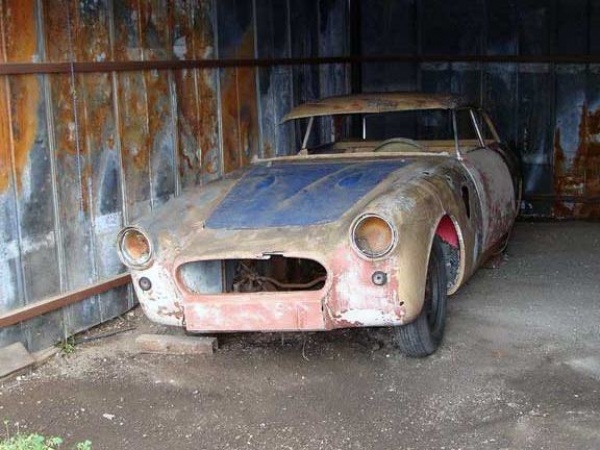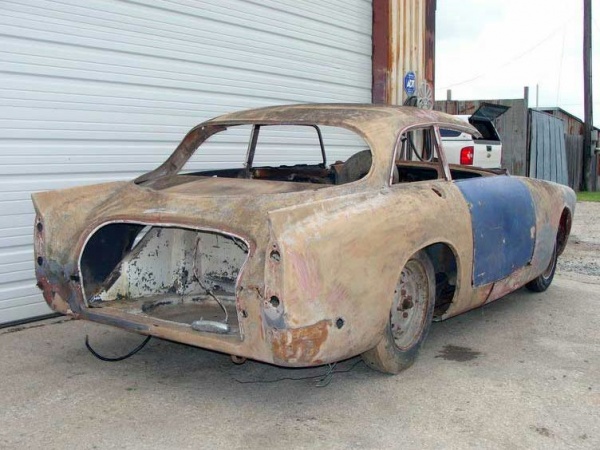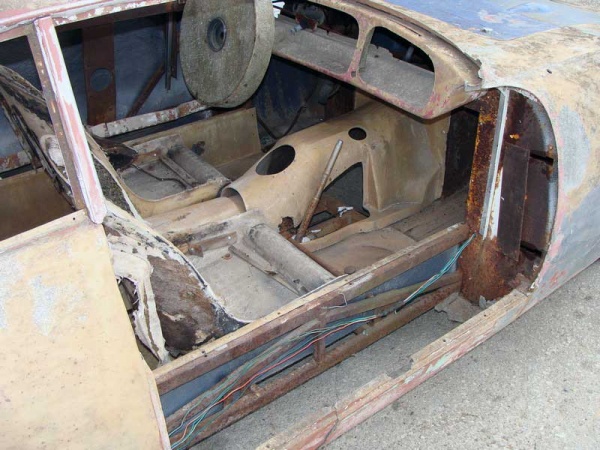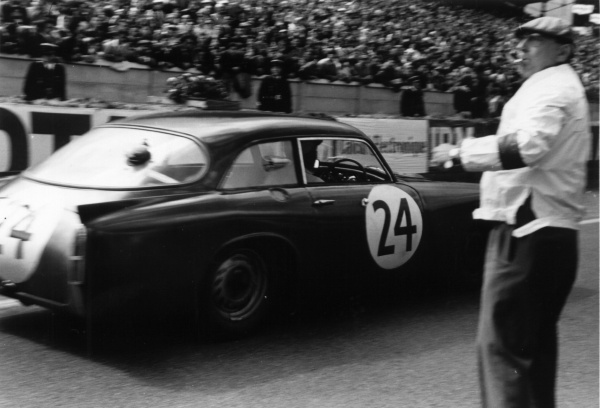
It’s hard to believe, but this skeleton of a car represents one of the most successful first-time LeMans finishes in the history of the event. In 1958, a Peerless finished 16th place overall and 4th place in the two liter Sports class. The fiberglass-bodied car averaged 83.6 m.p.h. and completed 240 laps, an incredible performance for an untested platform. Although this 1957 Peerless GT for sale on eBay has fallen from grace, its rarity and possible provenance as the third car built should help it emerge from its sorry state. Find the auction listing here.
Created using Triumph TR3 mechanicals, the Peerless was originally designed as an aluminum-bodied GT. Though the first prototype debuted to rave reviews, the car later received a widened track, making it possible to replace the TR3’s live rear axle with a more sporting De Dion suspension. John Brown, a member of Peerless’ management team and ardent supporter of the product, was the key influence behind changes like these. Other decisions helped make the car more affordable, such as the switch from aluminum to fiberglass. Aside from the suspension swap, the rest of the car’s mechanical bits remained Triumph-sourced, with the engine providing 100 b.h.p. at 5,000 RPMs.

In an interesting twist, the company founders saw an opportunity for the brand in America. The defunct Peerless Company of Ohio had shuttered, and the British entrepreneurs felt they could capitalize on the brand’s popularity with U.S. consumers. However, like many niche automakers, the car suffered from quality-control issues and pricing that placed it on the high-end compared to more mainstream competitors. Only 325 examples were produced between 1957 and 1960, when production ceased.

The car featured here has numerous issues, starting with its lack of many parts that may now be NLA. With no motor, transmission, glass or trunk lid, this early-production model would benefit from an owner closely tied to a network of Peerless specialists or with impressive fabrication skills. While sourcing Triumph-derived components shouldn’t be an issue, other challenges include a stripped interior and a gouge in the passenger front fender. The fiberglass body means rust is not a problem on the outside, but beware of the horrors that lurk beneath.

If you’re the type of buyer who enjoys a blank slate, there’s no shortage of potential with this example. Though sourcing original trim and interior parts would be preferable to us, just keeping this limited-production 2+2 GT on the road – in whatever form possible – may also be an option. Given the car’s pedigree, a custom roll cage, Plexiglas and fuel cell might be more enjoyable investments than spending years hunting down an original seat, and possibly more affordable. 70 examples made their way to the U.S., and it’s likely far fewer survive today.



Great phrase, “there’s no shortage of potential “. That’s a lovely way of viewing it; however, one could say the same for a blank slate, some matt and resin.
I like the concrete disk steering wheel.
Agreed. The millstone is telling.
The quality on Peerless was such that even a brand new car from the factory required a lot of work before it was roadworthy. To make one reliable required even more work.
Yeah! Love the steering wheel! Heavy.
I hope someone brings this back to life
Wow! Talk about starting from scratch. The steel needs to be completely rebuild and the fiberglass needs to be as well. You’re basically starting out with a pattern from which to build. Lots of luck to the buyer.
I know a guy who used a steering wheel just like that – I think his name was Flintstone.
I love finding Barn finds, but I think this is just a “LITTLE” to far from the barn.
Good luck to someone :-)
Come on, chaps.
Faint heart never won fair maiden.
This could be a fantastic blank canvas.
A TR3 chassis should be able to support a Daimler 2.5L, V8 engine. After all, the SP250 was pretty much a TR3V8. Period engine mod’ in a car made for it – almost.
Fuzz Townshend